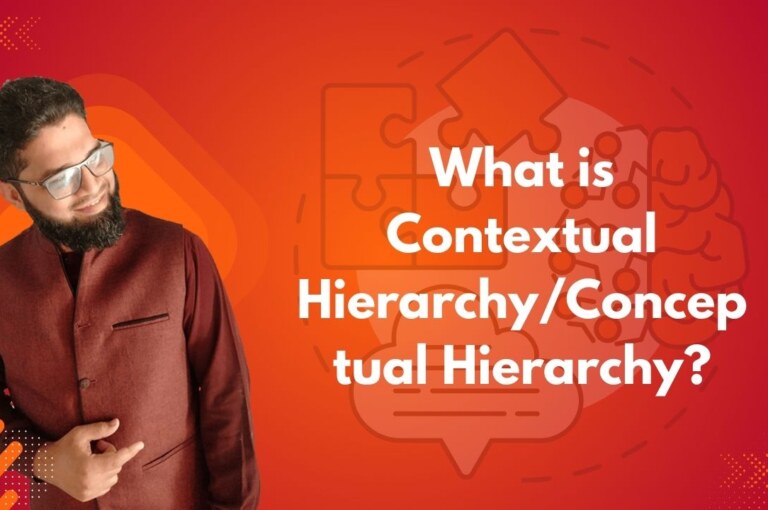Contextual Hierarchy (Conceptual Hierarchy) is a structured organization of information where meaning depends on position and relationships within a broader context. Used in NLP, information retrieval, and decision-making systems, it helps represent and understand data more effectively by organizing concepts in a layered framework.
The terms Contextual Hierarchy and Conceptual Hierarchy pertain to structured frameworks that organize information based on context and abstraction levels, respectively.
Conceptual Hierarchy:
A conceptual hierarchy organizes concepts from the general to the specific, forming a multilevel structure where higher levels represent broader categories, and lower levels denote more detailed subcategories. This arrangement facilitates understanding and navigation within a knowledge domain.
For instance, in data mining, a concept hierarchy maps low-level concepts to higher-level, more general concepts, aiding in data analysis and interpretation.
Contextual Hierarchy:
Contextual hierarchy involves organizing information based on the surrounding circumstances or environment, influencing the meaning and relevance of data. In design, for example, contextual design is a user-centered process that collects data about users in their natural environment, interprets it, and uses it to inform product development.
This approach ensures that the design aligns with the users’ actual needs and contexts.
Key Features of Contextual Hierarchy:
Hierarchical Structure:
Contextual hierarchy organizes information in levels, from broad to specific, to capture relationships and dependencies.
Example:
- Domain: Technology
- Subdomain: Artificial Intelligence
- Topic: Natural Language Processing
- Subtopic: Contextual Hierarchy
Dynamic Meaning Based on Context:
Words, phrases, or entities take on different meanings depending on their position in the hierarchy.
Example: The word “Apple” might refer to a fruit in a food-related hierarchy but to a company in a technology-related one.
Applications:
- Search Engines: To prioritize results based on relevance in the context of a user’s query.
- NLP Systems: To understand dependencies and relationships in text (e.g., sentence parsing or question answering).
- Knowledge Graphs: To represent entities and their relationships in a structured, hierarchical way.
- Decision Trees: To make decisions by progressing through contextual layers.
Example in NLP:
Sentence: “The president of Tesla spoke at a technology conference.”
Hierarchy:
- Top Level: Tesla (Organization)
- Sub Level: Role: President → Elon Musk
- Contextual Connection: President of Tesla → Technology context → Conference relevance.
Advantages:
- Improved Understanding: Helps in capturing nuance and deeper relationships between data points.
- Efficient Organization: Makes large datasets or complex information easier to navigate and process.
- Enhanced Context-Awareness: Supports systems like chatbots, search engines, or recommendation systems in providing accurate results.
Challenges:
- Ambiguity Resolution: Correctly placing elements in the hierarchy when they have multiple potential meanings.
- Dynamic Contexts: Adapting hierarchies for shifting contexts or domains.
Wrap Up
Contextual Hierarchy is a structured approach to understanding and organizing information based on layered contexts. It ensures accurate interpretation of data by capturing relationships and dependencies, enhancing relevance in NLP, information retrieval, and decision-making systems.
Want to Go Deeper into SEO?
Explore more from my SEO knowledge base:
▪️ SEO & Content Marketing Hub — Learn how content builds authority and visibility
▪️ Search Engine Semantics Hub — A resource on entities, meaning, and search intent
▪️ Join My SEO Academy — Step-by-step guidance for beginners to advanced learners
Whether you’re learning, growing, or scaling, you’ll find everything you need to build real SEO skills.
Feeling stuck with your SEO strategy?
If you’re unclear on next steps, I’m offering a free one-on-one audit session to help and let’s get you moving forward.





Leave a comment